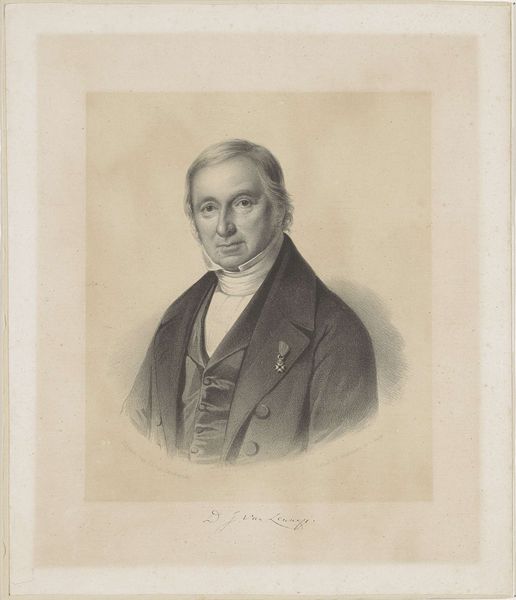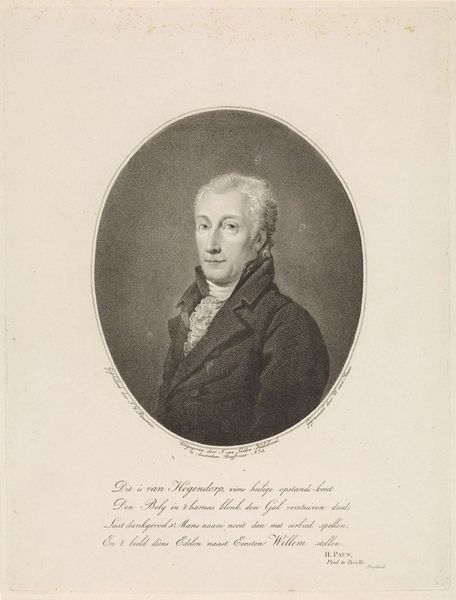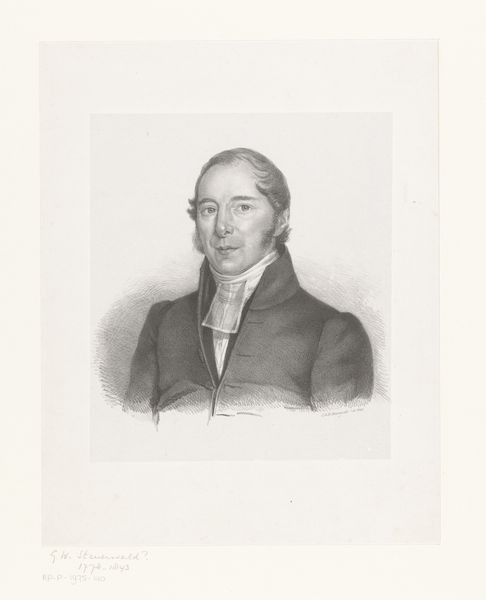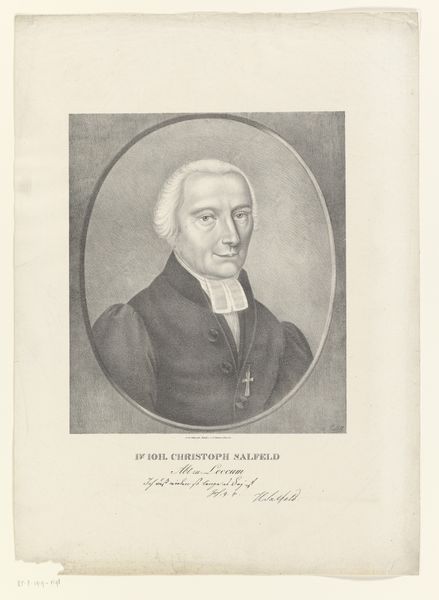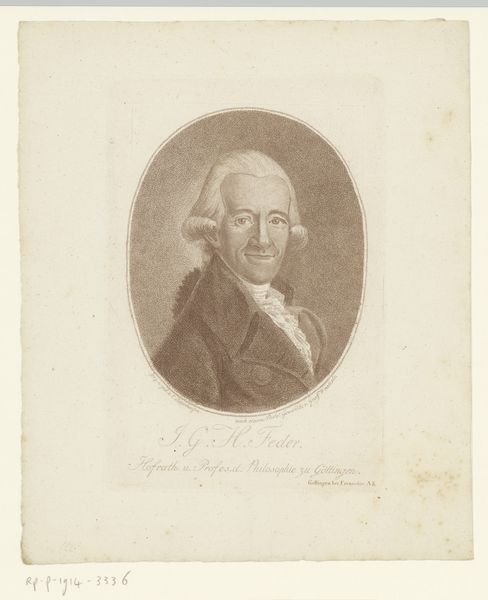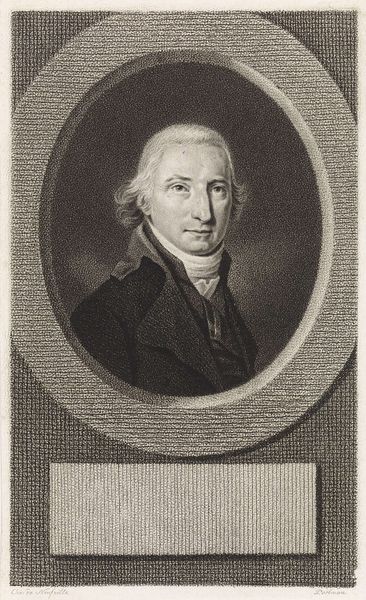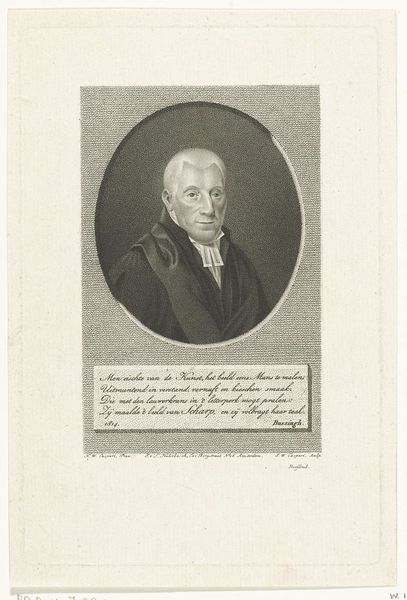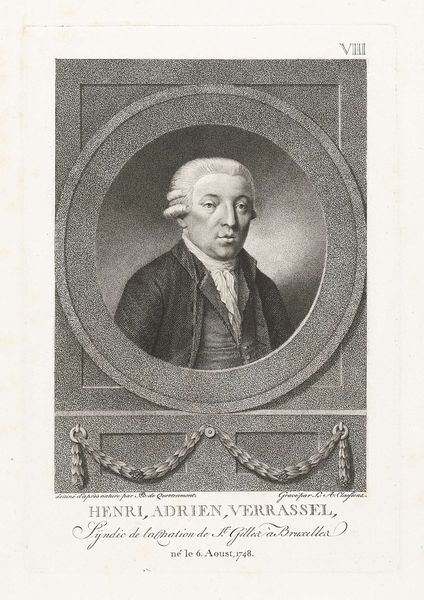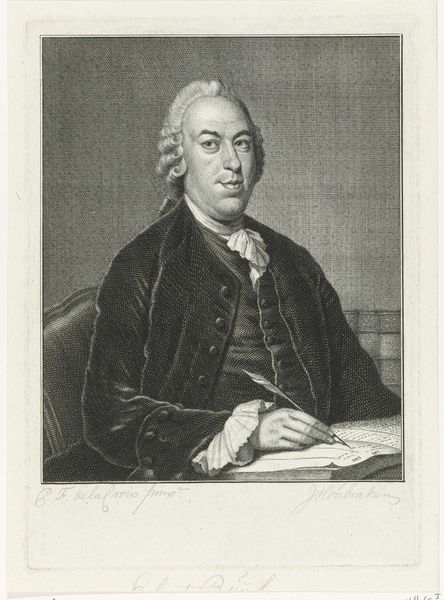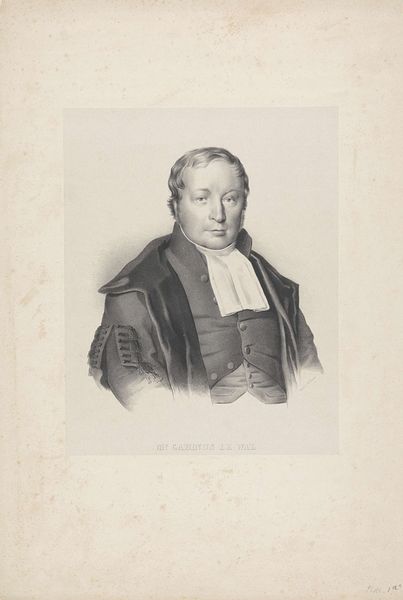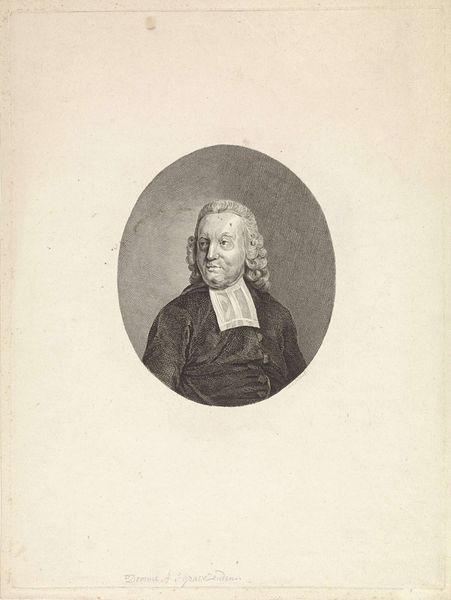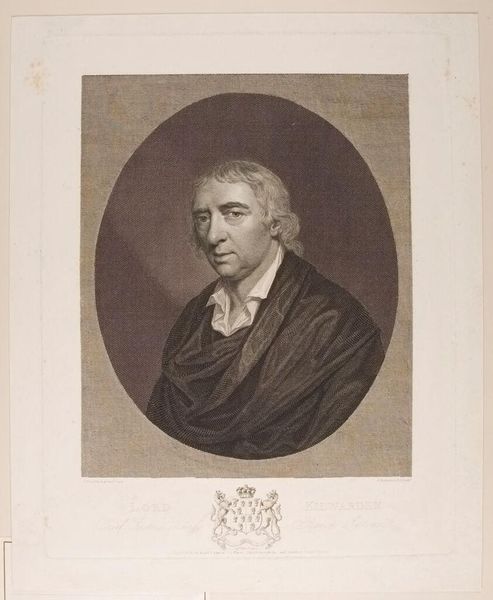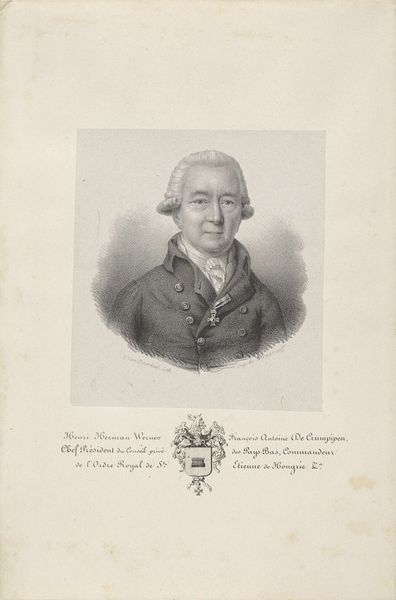
drawing, pencil, graphite
#
portrait
#
drawing
#
neoclacissism
#
charcoal drawing
#
pencil drawing
#
pencil
#
graphite
#
graphite
Dimensions: height 376 mm, width 271 mm
Copyright: Rijks Museum: Open Domain
Curator: Before you is a portrait made by Frederik Christiaan Bierweiler sometime after 1793. This graphite, pencil, and charcoal drawing is titled "Portrait of Christian Heinrich Ebersbach." Editor: It's a fairly somber piece. The dark oval framing focuses our gaze directly on the subject, whose gaze meets ours with a peculiar mix of calm and something unreadable. Curator: Well, Ebersbach was a German preacher in Amsterdam at the time. Portraits like this one would have been commissioned to signal a sitter's status and role within a particular community. The Neoclassical style emphasizes reason, order, and a certain civic virtue, doesn't it? Editor: Certainly. The sharp lines defining his face and the restrained color palette all contribute to that feeling of order. The drawing is contained within an oval, reinforcing a sense of constraint. The graphite and charcoal render details that are strikingly precise. Note how Bierweiler uses subtle shading to sculpt the face and create depth. Curator: Precisely. And the text below his portrait clarifies that public role and community. It firmly roots Ebersbach within the German-Lutheran community of Amsterdam. We see the political weight of religious identity expressed through art. Editor: The subdued colors are quite affecting and bring forth a certain seriousness in Ebersbach's demeanor. You sense gravity without bombast, perhaps mirroring his character. His direct gaze does command respect through sheer stillness. Curator: These images served an important function. Displayed within the domestic space, portraits like these helped to create and reinforce social norms. The visual language spoke directly to societal expectations surrounding men like Ebersbach. Editor: I find it fascinating how Bierweiler uses the constraints of the oval to bring a particular type of attention and intensity to the image. Look how that narrow band of light across his forehead and cheek almost gives a spiritual dimension to an otherwise modest drawing. Curator: Seeing it today, we can analyze the historical and cultural values it once promoted. The Rijksmuseum keeps works like this one in the public eye, a valuable lens for us to reconsider how these norms developed. Editor: Absolutely. It prompts a rich discussion of faith, artistry, and how individual personality can subtly infuse even the most conventional artistic structures.
Comments
No comments
Be the first to comment and join the conversation on the ultimate creative platform.
